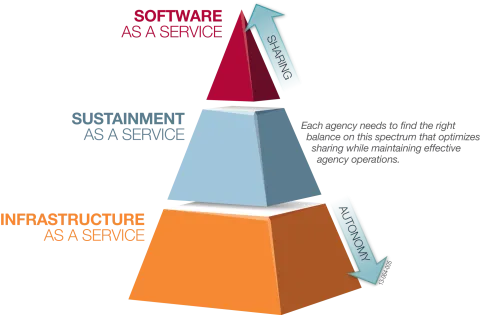The Sharing Quality Services Cross Agency Priority (CAP) goal in the President’s Management Agenda—CAP Goal 5—establishes a 10 year plan for continuous improvement and delivery of quality services and technology for administrative services by expanding the use of common solutions and contracts, thus standardizing administrative operations.
While not explicitly stated in the PMA, related guidance and analysis suggests that Software as a Service (SaaS) is the model most likely to provide the desired cost predictability and regular innovations in support of the PMA goals. Essentially, the model for administrative functions is changing to what I call “best in class.”
|
Legacy Model |
Best in Class |
|
Customizations |
Configurations |
|
Agency-specific functionality |
Standardization |
|
Long gaps in time between upgrades |
Regular, easy to test/implement releases |
|
Unpredictable costs |
Predictable costs |
The problem with urging or prescribing SaaS models, however, is that SaaS is not an ownership model. Rather than purchasing, owning and managing the software, agency personnel access it via the cloud, and the agency pays a subscription fee for as long as it needs to use the software. Many agencies already have ownership rights to software via enterprise or perpetual licenses. Switching to SaaS while those arrangements are still in place would mean squandering the money already spent or committed.
But what if you could get to a best-in-class status without having to abandon your current investment? What if you could do it while retaining full ownership rights to your data and your systems, with direct influence into the release schedules, features and product direction?
If you find yourself wondering where to start, I recommend you review what you already have to determine the best course of action. There are efficiencies to be gained at each of the layers of software delivery. Assess your existing enterprise licenses, contracts, historical investments and risk tolerance; from this evaluation you can then establish the correct shared services course and timeline for each administrative system or function.
So, what are the layers of software delivery? Below is a very non-technical model.
- Infrastructure as a Service: In concert with federal IT mandates, agencies should consider cloud adoption when defining their administrative system roadmap. The benefits include securing data in the Federal Risk and Authorization Management Program (FedRAMP)-certified environments, the ability to scale in response to continuously changing agency needs and real time metrics related to utilization, consumption and service management. This might be a good initial step for an agency looking to lower its total cost of ownership, reduce its data center footprint and build a business case for future sharing, all while leveraging existing licenses. Many agencies are already using public clouds. Moving administrative systems to the cloud will broaden those benefits.
- Sustainment as a Service: This model is for agencies ready to take a broader step. Many of our clients have successfully consolidated around standardized shared service environments throughout the Legislative, Judicial and Executive branches. In conjunction, some of our clients have structured contracts that include regular upgrades and support on a fixed price model. This model benefits federal agencies by offering predictable pricing and regular innovations, but allows them to leverage software ownership rights and authority around timing of innovation deployments. This authority is crucial when there are programmatic integration dependencies and needs throughout the clients’ business system footprint.
- Software as a Service: Ask two people what SaaS means and you might well get two different answers—if not more. My version is: It’s a subscription-based pricing model that allows an agency to access software. Agencies retain ownership of their data but do not own the software. New releases are automatically delivered on a regular frequency as established by a service delivery agreement which binds all of the tenants using a given SaaS application. A SaaS model benefits an agency looking for predictable pricing, with a small business system footprint that can easily accept software upgrades. To successfully adopt SaaS, agencies must ensure the contract vehicle allows for integration to non-SaaS components.
There are different models available to navigate the adoption of the Sharing Quality Services CAP goal. The key is to determine what success looks like for each agency given their current investments and contracts. Agencies can get to best in class by moving to either Sustainment as a Service or Software as a Service.
Read more about the President’s Management Agenda in Stephanie Mango’s blog post, “5 things that make the President’s Management Agenda different this time.”






